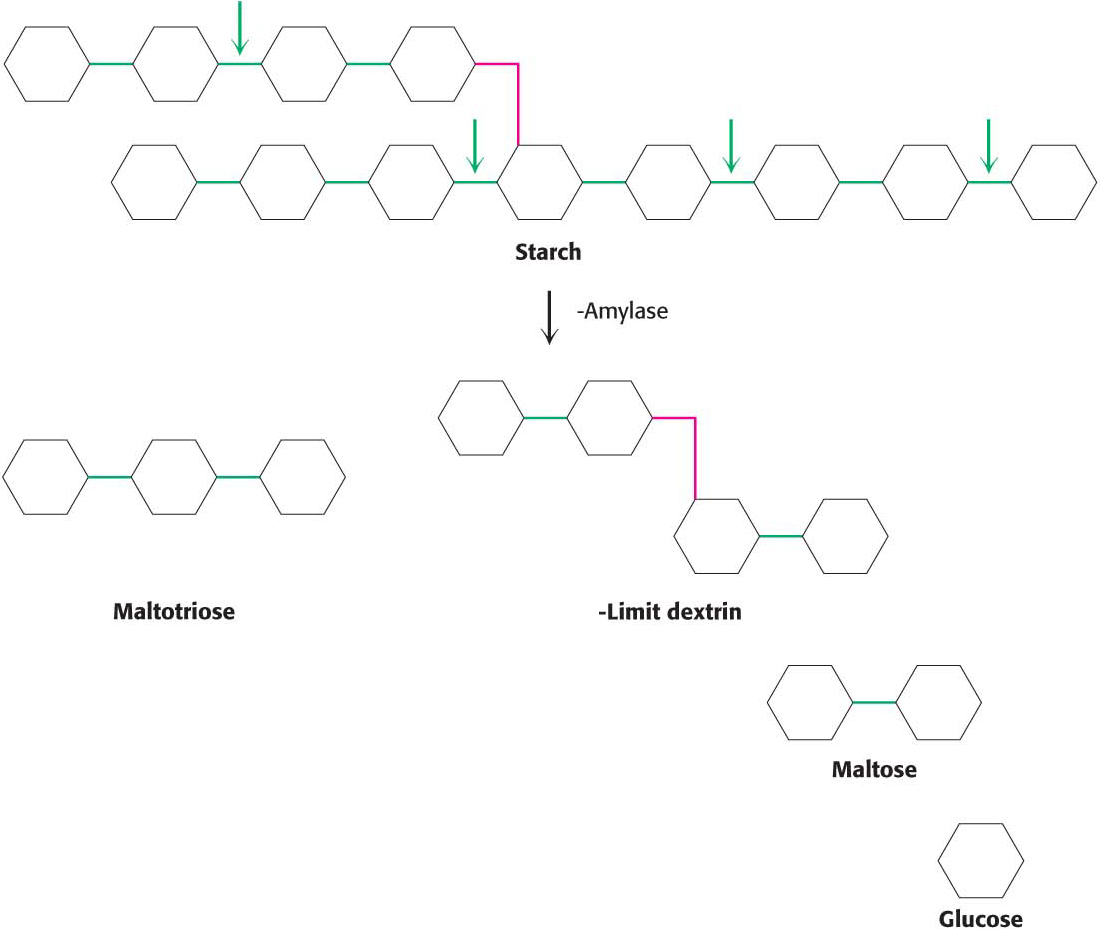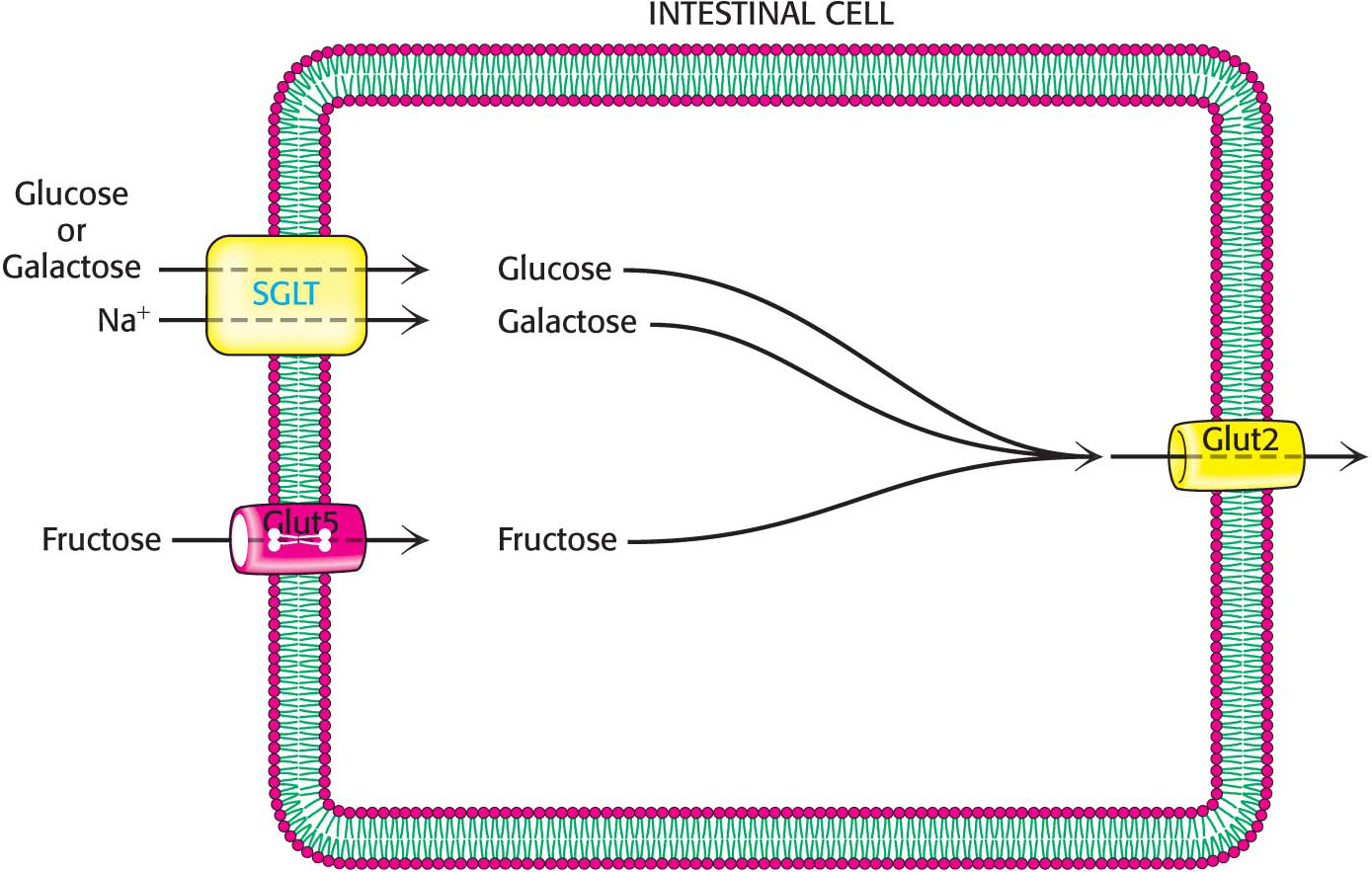14.3 Dietary Carbohydrates Are Digested by Alpha-Amylase
How are the crust and the vegetables that topped our pizza converted into biochemicals? These ingredients are sources of carbohydrates, both complex, such as starch and any glycogen that might be present in the meat, and simple, such as sucrose.
Like proteins, dietary carbohydrates are digested into molecules that can be readily absorbed by the intestine. The most common end products are the monosaccharides glucose, fructose, and galactose. Our primary source of carbohydrates is the complex carbohydrate starch, present in the crust. This branched homopolymer of glucose is digested primarily by the pancreatic enzyme α-amylase, which cleaves the α-1,4 bonds of starch but not the α-1,6 bonds (Figure 14.5). The products are the di- and trisaccharides maltose and maltotriose, and limit dextrin, which is not digestible by α-amylase because of the α-1,6 bonds. Maltase converts maltose into glucose, and α-glucosidase digests maltotriose and any other oligosaccharides that may have escaped digestion by the amylase. α-Dextrinase further digests limit dextrin into simple sugars. Maltase, α-glucosidase, and α-dextrinase are on the surfaces of the intestinal cells.

Figure 14.5: The digestion of starch by α-amylase. Amylase hydrolyzes starch into simple sugars. The α-1,4 bonds are shown in green. The α-1,6 bonds are red. The sites of α-amylase digestion are indicated by the small green arrows.
DID YOU KNOW?
Baking pizza in an oven converts the dough into crust and solves a biochemical problem as well: starch is difficult to digest without first being hydrated, and heat allows the starch to absorb water.
The digestion of disaccharides is simpler than the digestion of complex carbohydrates. Sucrose, a disaccharide consisting of glucose and fructose contributed by the vegetables, is digested by sucrase. Lactase degrades the milk-sugar lactose into glucose and galactose. Sucrase and lactase also reside on the surfaces of intestinal cells.
Glucose and galactose are transported into the intestinal epithelial cells by a secondary active-transport process carried out by the sodium–glucose linked transporter (SGLT) while fructose diffuses across the cell membrane through a transporter called GLUT5 (Figure 14.6). Another transporter, GLUT2, releases all three monosaccharides into the bloodstream, where they can travel to other tissues to be used as fuel. We will examine the GLUT proteins in more detail in Chapter 16.

Figure 14.6: Uptake of monosaccharides. The results of carbohydrate digestion, primarily glucose, galactose, and fructose, are transported into the intestinal cells by specific transport proteins. The carbohydrates also exit the cell with the assistance of transport proteins.

